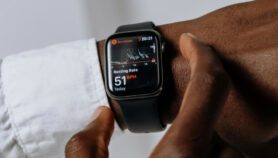By: John Scott
Send to a friend
The details you provide on this page will not be used to send unsolicited email, and will not be sold to a 3rd party. See privacy policy.
The amount of money spent on research and development (R&D) directed at the health priorities of the world’s poor should be significantly increased to at least US$3 billion per year, according to a top-level international commission set up by the World Health Organisation (WHO).
Half of this money, the commission concludes after a two-year study, should be spent on peer-reviewed basic biomedical research through a new international body, known as the Global Health Research Fund (GHRF). This would draw heavily on the operating procedures and experience of organisations such as the US National Institutes of Health (NIH) and various national medical research councils (MRCs).
In principle, such a fund should provide comparable backing for health and biomedical research to that provided to agricultural research through the World Bank’s Consultative Group for International Agricultural Research (CGIAR), say the economists and public health experts who made up the commission’s members.
The recommendations are made in the final report of the Commission on Macroeonomics and Health, a body set up two years ago by the WHO to explore the relationships between health and economic prosperity, and chaired by Jeffrey Sachs, professor of economics and director of the Centre for International Development at Harvard University.
The commission carried out much of its work through working groups, one of which — chaired by Sachs and Richard Feacham, director of the Institute of Global Health at the University of California — focussed on the topic of global ‘public goods’ for health, a category that includes spending on health research.
Reflecting the conclusions of the working party, the commission argues that overall improvements in health are a “critical requirement” for development, and proposes that donor countries should increase their spending on health from the current level of about US$6 billion a year to US$27 billion.
Within this overall figure, the commission proposes that $3 billion be allocated towards R&D directed at the health needs of the world’s poor. Half of this sum — US$1.5 billion per year — would be spend on targeted R&D aimed at producing new drugs, vaccines, diagnostics, and intervention strategies against HIV/AIDS, malaria, tuberculosis, reproductive health, and other priority health conditions of the poor.
“With regard to AIDS, for example, this would include research on the use of antiretrovirals in low-income settings, vaccines for the specific viral subtypes that are prevalent in the low-income countries, and microbicides to block the transmission of the virus,” the report says.
In all of the diseases quoted, however, the report says that "sustained flows of R&D support will be absolutely vital, since breakthroughs in these areas will require years of substantial investigation and clinical trials".
In addition to this targeted R&D, the commission says that there is an urgent need for greatly increased basic scientific research directly relevant to the needs of poor countries in both in health — for example in epidemiology, health economics, health systems, and health policy — and biomedical topics such as virology.
The Global Health Research Fund that the commission says should be established would oversee how this money was spent to support peer-reviewed scientific research.
“The NIH and the MRCs of the OECD countries, and MRCs in countries such as Brazil, Malaysia and South Africa, have substantial accumulated experience in the funding of good research and in maintaining quality, transparency, and accountability,” the report says. “This wealth of experience must be fully tapped in the design and creation of the new international NIH/MRC.”
The commission says that a key goal of the GHRF should be to build long-term research capacity in the developing countries themselves; some of the money should therefore be used to provide vital funding for research groups in low-income countries. But building up research capacity has to start with the governments of such countries recognising the importance of strengthening universities and other research-based institutions.
Beyond the funding from the GHRF, new thinking is required to overcome the ubiquitous problems of low salaries, institutional weaknesses, a lack of peer review, and the brain-drain of the brightest and the best to Europe and North America, says the commission.
Finally, it argues that the WHO should work with the global research-based pharmaceutical industry to operationalise technology transfer to poor countries. “All major research pharmaceutical companies should be encouraged to establish long-term research and training partnerships in the developing world,” it says, citing for example the recent commitment of Pfizer to establish an Academic Alliance for AIDS Care and Prevention at Makarere University in Uganda, which will train African doctors on the use of AIDS medicines.
The commission urges bilateral agencies, the World Bank, and the new Global Fund to Fight AIDS, Tuberculosis, and Malaria, to ensure that an adequate proportion of their country-specific project assistance is devoted to developing research capacity and conducting operational research on relevant topics. It suggests that a minimum of 5 per cent of all project assistance should be devoted to research relevant to the project.
Justifying this recommendation, it points out that although most World Bank concessional loans, for example, contain line items for operational research relevant to the project being funded, or to the preparation of a subsequent project, typically these monies “are either poorly spent, underspent, or both”.
The commission calls for the World Bank in particular to ensure the effective use of these research resources, so that the necessary operational research is conducted and local research capacity is supported and strengthened.
© SciDev.Net 2002













